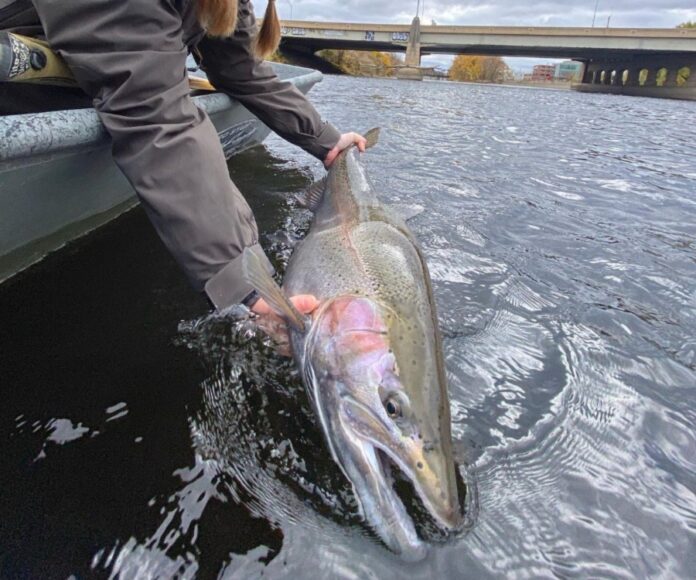Written By: Capt. Max Werkman, RiverQuest Charters
All photos by Tom Werkman
Winter can be one of the most productive times to pursue Great Lakes steelhead, as they begin to emerge from the depths and enter rivers in preparation for the spring spawn. Because these fish are seeking to expend minimal energy as they wait, their preferred holding locations are fairly predictable: they want slow current and plenty of room to spread out, so you should focus on the deepest, darkest holes you can find.

Typically, these winter holes are located within large bends in the river where you can’t see the bottom because the water is 5 to 10 feet deep. Look for high banks that tend to indicate deeper water below. The steelhead will be holding somewhere between the middle of the river and the deeper side, often along a seam marked by a thin line of bubbles, where two currents of different speeds intersect. Be sure to start by working the nearest seams (in the middle of the river) before making longer casts toward the far bank. Imagine that the water is a grid, and work each square over thoroughly before moving on to the next. Sometimes you need to practically hit these fish in the face to convince them to bite.

Deep holes in this region often have a lot of dead wood piled up at the bottom, so be prepared for the frustration of fishing around snags all day. Steelhead tend to hold close to structure when the water is cold, so you have no choice but to constantly risk losing rigs in order to keep your flies down in the strike zone. Sometimes it might feel like you spend more time dealing with snags than actually fishing, but as the old saying goes, “If you aren’t tying, you aren’t trying.” Bring warm gloves and plenty of extra flies.
Capt. Max Werkman is co-owner and guide for RiverQuest Charters in Grand Rapids, MI.
Credit: Source link






























